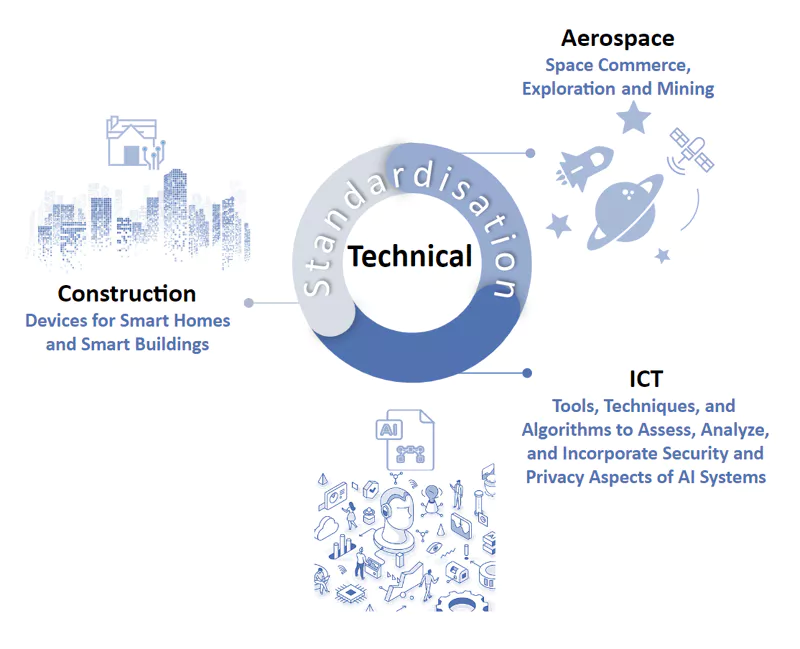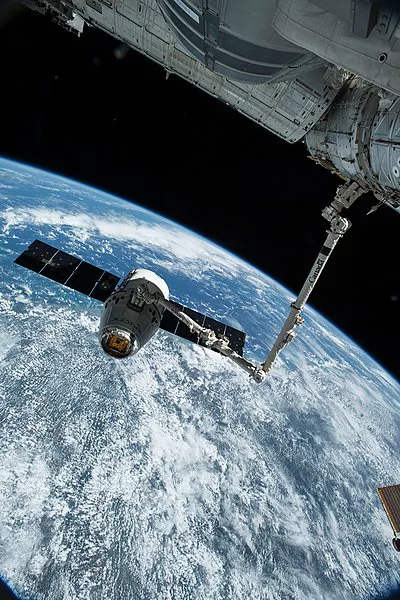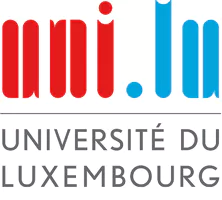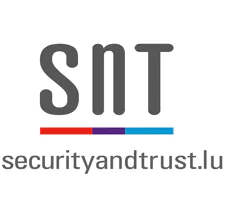ILNAS-SnT Research Programme 2021-2024
Technical Standardisation for Trustworthy ICT, Aerospace and Construction

RESEARCH
Core research pillars
- - ICT.
- - Aerospace.
- - Construction.
- Core scientific research areas, technical standardisation needs, and identification of gaps between research and standardisation.
- Deepen data and AI capabilities and continuously drive innovation in 3 major economic sectors of Luxembourg.

ICT
The space sector is no longer an exclusive domain of governments and military applications. With reduced access costs, more private companies have entered the space industry, significantly increasing its popularity. The growth in satellite data and the number of providers has led to the development of satellite data marketplaces, which facilitate easier access to such data. Our research focuses on challenges within these satellite data marketplaces. Specifically, we address the NP-hard multi-objective combinatorial problem of selecting satellite images that meet certain requirements to create larger composite images, called mosaics, for studying extensive regions. This involves optimising multiple objectives such as cost, cloud coverage, incidence angle, and image resolution.
Aerospace
With our research, we are extending the machine learning capabilities of distributed systems to make truly autonomous swarms of satellites a reality. These will give unprecedented flexibility and resilience to future space missions while also reducing the cost of missions in the long term. By simultaneously identifying related standardisation needs in this field, we prepare stakeholders to be ready for liftoff when the time comes.
Construction
The development of the construction industry is one of the manifestations of the growth and development of communities. The highest share of fixed capital accumulation and the highest share of employment is in this industry sector. Improving the quality in the production of materials, design and implementation methods, speeding up the construction process, competition in the advancement of technology, optimal use of labor and the use of new construction technologies are among the influential components in this industry.With our research, we aim to increase the efficiency and quality control of the construction sector through the optimisation of some fundamental variables, which carry important roles in this industry.
Specifically, our research focuses on minimizing the thermal transmittance of windows to enhance the energy efficiency of buildings, while simultaneously striving to reduce construction costs. These initiatives exemplify the practical applications of our research efforts.
Cutting-edge research
Research at the forefront of three fast-developing domains
Identification of standardisation gaps
Identifying standardisation needs to prepare for the future
of industry
Maximum impact
Encouraging uptake of research output by stakeholders
-
Sub-menu Item
-
Sub-menu Item
-
Sub-menu Item
-
Sub-menu Item
-
Sub-menu Item
-
Sub-menu Item
-
Sub-menu Item
-
Sub-menu Item
-
Sub-menu Item



